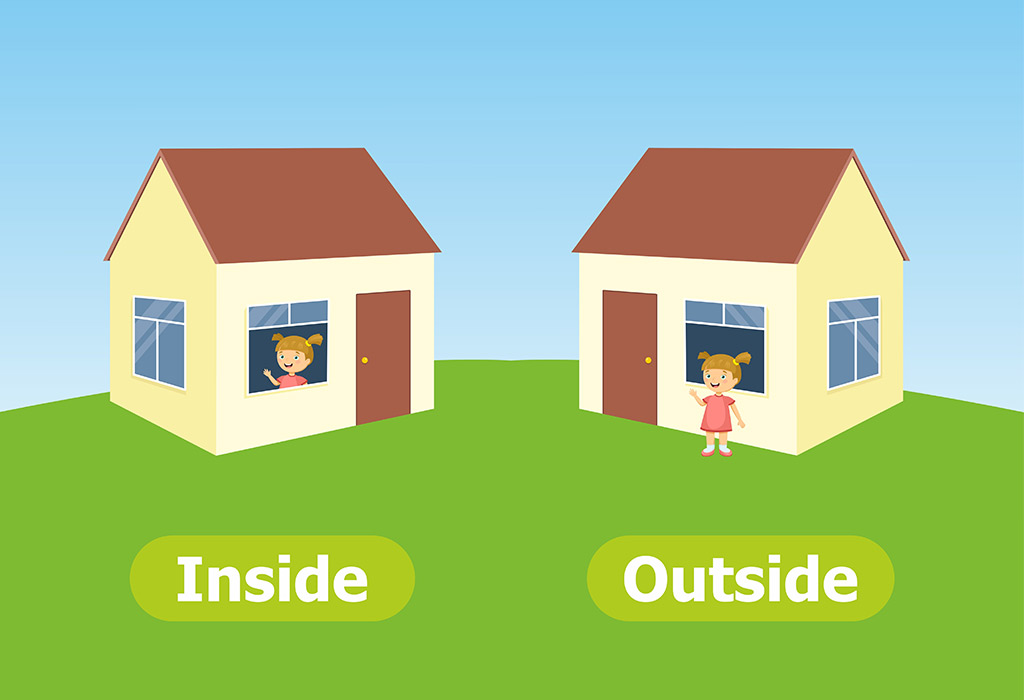Inside Semi Truck Sleeper Cabs: Your Home Away From Home on the Open Road
Inside Semi Truck Sleeper Cabs: Your Home Away From Home on the Open Road cars.truckstrend.com
An Engaging Introduction: The Mobile Sanctuary
For the uninitiated, a semi-truck might simply appear as a powerful machine designed to transport goods across vast distances. But for the dedicated men and women who spend weeks, sometimes months, away from their traditional homes, the semi-truck is far more than just a vehicle. It’s their office, their kitchen, their bedroom, and their sanctuary on wheels. At the heart of this mobile living is the sleeper cab – a specially designed living space integrated into or attached to the truck’s cabin.
Inside Semi Truck Sleeper Cabs: Your Home Away From Home on the Open Road
The sleeper cab is not merely an afterthought; it is a critical component that directly impacts a long-haul truck driver’s comfort, well-being, and ultimately, their safety and productivity. As regulations mandate specific rest periods for drivers, a comfortable and functional sleeper cab becomes indispensable, transforming what could be a grueling existence into a manageable, even comfortable, lifestyle on the road. Understanding the intricacies of these mobile abodes offers a fascinating glimpse into the life of a modern professional truck driver.
The Evolution of the Mobile Abode
Sleeper cabs weren’t always the luxurious mini-apartments they can be today. Early versions were often rudimentary, consisting of little more than a cramped bunk behind the seats, offering minimal comfort. As the trucking industry grew and driver retention became a key concern, manufacturers began to innovate. The demand for increased comfort, privacy, and functionality led to a significant evolution.
Today, modern sleeper cabs range from compact extensions to expansive, walk-in living spaces that rival small RVs. This evolution reflects a growing recognition that a well-rested, comfortable driver is a safer and more efficient driver, contributing not only to their personal well-being but also to the overall safety and reliability of the supply chain.
Key Components and Layouts of a Modern Sleeper Cab
Modern sleeper cabs are meticulously designed to maximize space and functionality, often incorporating a surprising array of amenities. While configurations vary, most share common essential components:
1. The Sleeping Area
- Bunks: Typically, one or two bunks are present. A single lower bunk is standard, but many larger sleepers feature an upper bunk that can be folded away when not in use. High-end models might even have a permanent double bed setup.
- Mattress: Crucial for quality sleep, drivers often upgrade factory mattresses to memory foam or coil spring options for better support and comfort.
- Privacy Curtains: Essential for blocking out light and ensuring privacy, separating the sleeping area from the cab’s driving section.

2. Living and Working Space

- Seating: A dinette area with a table and bench seating is common, serving as a dining space, workspace, or lounge area. Some trucks feature swivel passenger seats that can turn to face the living area.
- Storage: This is paramount. Overhead cabinets, under-bunk storage, wardrobes, and various compartments are strategically placed to hold clothes, food, personal items, and paperwork.
- Work Surface: A small desk or pull-out table might be available for laptop use, paperwork, or meal preparation.

3. Kitchenette Features (Optional/High-End)
- Refrigerator/Cooler: Essential for keeping food and drinks fresh. Sizes range from small mini-fridges to larger residential-style units in premium sleepers.
- Microwave Oven: A staple for heating meals, reducing reliance on expensive truck stop food.
- Portable Cooktops: Induction plates or slow cookers are popular for preparing simple meals.
- Sink: Some of the largest sleeper cabs include a small sink with a water tank for washing dishes or personal hygiene.
4. Bathroom Facilities (Rare, but available in premium models)
- Cassette Toilet: A small, portable toilet is sometimes found.
- Shower: Extremely rare, but some custom or ultra-premium sleepers might feature a compact shower unit. These typically require external water hookups or large onboard tanks.
5. Entertainment and Connectivity
- Television: Wall-mounted flat-screen TVs are common, often connected to satellite dishes, streaming devices, or portable antennas.
- Sound System: Enhanced audio systems for music or movies.
- Power Outlets: Numerous 12V DC and 120V AC outlets (via an inverter) are necessary for charging electronics, running appliances, and powering entertainment.
- Wi-Fi/Cellular Boosters: Essential for staying connected with family, dispatch, and accessing entertainment.
6. Climate Control
- HVAC System: The truck’s primary heating and air conditioning system extends into the sleeper.
- Auxiliary Power Units (APUs): These independent diesel or battery-powered units provide heating, cooling, and electrical power without idling the main engine, saving fuel and reducing emissions.
- Parking Heaters/Coolers: Smaller, dedicated units for maintaining comfortable temperatures when the engine is off.
Types of Sleeper Cabs
Sleeper cabs are broadly categorized by their size and integration:
- Integrated Sleepers: These are built directly into the truck’s design, offering seamless access from the driver’s seat. They are the most common type for long-haul trucks. Sizes vary significantly, often measured by the bunk’s length (e.g., 48-inch, 72-inch, 80-inch+). Larger sleepers offer more headroom, storage, and space for amenities.
- Detachable/Modular Sleepers: Less common, these are separate units that can be detached from the truck. They offer flexibility but are typically seen in niche applications.
- Custom Sleeper Cabs: For drivers desiring ultimate comfort and personalization, custom sleeper builders can create bespoke living spaces, often extending the truck’s chassis to accommodate massive, highly customized interiors with luxury finishes and extensive amenities.
Benefits of a Well-Equipped Sleeper Cab
Investing in a comfortable and functional sleeper cab yields significant benefits for both the driver and the trucking company:
- Improved Driver Well-being and Comfort: A comfortable sleeping environment and amenities reduce fatigue, stress, and improve overall quality of life on the road. This is paramount for physical and mental health.
- Enhanced Safety: Well-rested drivers are more alert, make better decisions, and are less prone to accidents. The sleeper cab directly supports compliance with Hours of Service (HOS) regulations.
- Increased Productivity: Drivers who can rest effectively and manage their basic needs within their truck spend less time seeking out amenities, allowing them to optimize their driving and resting cycles.
- Cost Savings: Having cooking facilities and a comfortable sleeping space significantly reduces expenses on hotels and restaurant meals, leading to substantial savings over time.
- Driver Retention: Companies that provide trucks with comfortable, well-maintained sleeper cabs often experience higher driver satisfaction and retention rates, crucial in an industry facing driver shortages.
- Personalization and Home Comfort: A well-outfitted sleeper allows drivers to personalize their space, creating a sense of "home" that mitigates the loneliness and challenges of life on the road.
Challenges and Solutions in Sleeper Cab Living
Despite the advancements, living in a sleeper cab presents unique challenges:
- Space Optimization: Even the largest sleepers are confined spaces.
- Solution: Smart storage solutions, multi-functional furniture, and minimalist living are key. Vertical storage, foldable items, and keeping only essentials help maximize usable space.
- Power Management: Running electronics and appliances requires reliable power.
- Solution: High-capacity inverters, robust battery banks, and Auxiliary Power Units (APUs) are essential. Understanding power consumption of devices is crucial.
- Hygiene and Cleanliness: Maintaining personal hygiene and a clean living space can be difficult without full bathroom facilities.
- Solution: Regular use of truck stop showers, portable camping showers, and diligent cleaning routines are necessary. Investing in a small portable vacuum and cleaning supplies is vital.
- Noise and Disturbances: Truck stops and rest areas can be noisy.
- Solution: Noise-canceling headphones, earplugs, and strategic parking choices can help. Thick curtains also offer some sound dampening.
- Loneliness and Isolation: Extended periods on the road can be isolating.
- Solution: While not directly a cab issue, a comfortable cab facilitates connectivity (Wi-Fi, good phone signal) for video calls with family, and can be a welcoming space for short visits from fellow truckers.
Tips for Maximizing Sleeper Cab Comfort and Functionality
For drivers, making the most of their sleeper cab is an ongoing process.
- Invest in Quality Sleep: A good mattress, comfortable bedding, and blackout curtains are non-negotiable for quality rest.
- Optimize Storage: Utilize every nook and cranny. Stackable containers, hanging organizers, and under-bunk drawers can make a huge difference.
- Power Wisely: Understand your power needs. An inverter is essential, but consider an APU if you spend a lot of time idling for power. Conserve power by unplugging unused devices.
- Personalize Your Space: Add photos, a favorite blanket, or small decorative items to make the space feel more like home. A comfortable reading light or a small plant can also enhance the ambiance.
- Stay Hydrated and Eat Healthy: A small fridge and microwave allow for healthier food choices than relying solely on fast food.
- Maintain Cleanliness: Regular cleaning prevents odors and keeps the living space pleasant. A small, portable vacuum cleaner is invaluable.
- Consider Air Quality: Air purifiers or small fans can improve air circulation and quality, especially important in confined spaces.
Practical Advice for Drivers
- Before Buying/Leasing: Test out different sleeper sizes and layouts if possible. Consider your typical route length, cargo type, and personal needs. A driver primarily on short hauls might not need an 80-inch sleeper.
- Outfitting Your Cab: Prioritize essentials first (mattress, power inverter, fridge). Then, gradually add amenities that enhance your daily life.
- Daily Living: Establish routines for sleep, meals, and hygiene. Organize your belongings logically so everything has a place and is easy to find.
- Safety First: Ensure any electrical modifications are done by professionals. Secure all loose items before driving to prevent them from becoming projectiles.
Estimated Costs for Sleeper Cab Amenities & Upgrades
While the "Inside Semi Truck Sleeper Cab" itself is part of the truck’s purchase or lease price, outfitting it to be a comfortable home involves various investments. Here’s a table with estimated costs for common amenities and upgrades drivers often purchase:
| Item/Upgrade | Description | Estimated Cost Range (USD) | Notes |
|---|---|---|---|
| Mattress Upgrade | Memory foam, gel, or coil spring mattress for better sleep quality. | $200 – $1,000+ | Crucial investment for driver health and comfort. |
| Power Inverter | Converts 12V DC to 120V AC for household appliances. | $100 – $800 | Pure sine wave inverters are more expensive but safer for sensitive electronics. |
| Mini-Fridge/Compact Refrigerator | 1.5 to 4.5 cubic feet, often 12V or dual voltage. | $150 – $600 | Saves money on food, allows for healthier eating. |
| Microwave Oven | Compact, low-wattage model suitable for truck inverters. | $50 – $200 | Essential for heating prepared meals. |
| Auxiliary Power Unit (APU) | Independent diesel or battery unit for power, AC, and heat without idling. | $8,000 – $15,000+ | Significant upfront cost, but huge fuel savings over time. |
| Portable Cooktop/Induction Plate | Single burner unit for simple cooking. | $40 – $150 | For drivers who prefer home-cooked meals. |
| Television (Flat Screen) | 19-32 inch LED TV, often 12V compatible. | $100 – $400 | For entertainment and relaxation. |
| Satellite TV/Internet System | Dish and receiver for satellite TV or mobile hotspot/booster. | $300 – $1,500+ | Monthly subscription fees extra. Essential for connectivity and entertainment. |
| Portable Toilet (Cassette/Camping) | Basic toilet for emergencies, no plumbing needed. | $80 – $300 | Provides convenience and privacy on the road. |
| Portable Shower | 12V camping shower or small battery-powered unit. | $30 – $100 | For quick rinses when truck stop showers are unavailable. |
| Storage Organizers | Hanging shelves, under-bunk drawers, closet organizers. | $20 – $100+ | Maximizes limited space, keeps cab tidy. |
| Dash Cam/Security Camera System | Front-facing and/or interior cameras for safety and security. | $50 – $500 | Protects against false claims, monitors cab during rest. |
| Window Insulators/Blackout Curtains | Custom-fit blinds or curtains for privacy and temperature control. | $50 – $200 | Improves sleep quality by blocking light and regulating temperature. |
| Air Purifier/Dehumidifier (small) | Compact unit for improved air quality and moisture control. | $50 – $200 | Important for health and comfort in a confined space. |
Note: Prices are estimates and can vary widely based on brand, features, quality, and installation costs (if applicable).
Frequently Asked Questions (FAQ)
Q1: How big are semi-truck sleeper cabs?
A1: Sleeper cab sizes vary significantly. They are often measured by the length of the bunk area, ranging from compact 36-inch or 48-inch sleepers to expansive 72-inch, 80-inch, or even custom sleepers exceeding 100 inches. The larger sizes offer more headroom, storage, and space for amenities.
Q2: Do all semi-trucks have sleeper cabs?
A2: No. While most long-haul trucks do, day cabs (trucks designed for local or regional routes where the driver returns home daily) do not have sleeper compartments. These trucks are often shorter and lighter, optimized for maneuverability and payload.
Q3: Can you shower and use a toilet inside a sleeper cab?
A3: In most standard factory sleeper cabs, no. Integrated showers and toilets are extremely rare and typically only found in the largest, most expensive custom-built sleepers or highly specialized RV-style conversions. Most drivers rely on truck stop facilities, portable camping toilets, and sometimes portable 12V showers for basic hygiene.
Q4: How do drivers get electricity for appliances in their sleeper?
A4: Trucks provide 12-volt DC power. To run standard household appliances (like microwaves, TVs, or laptops), drivers use a power inverter to convert the 12V DC to 120V AC. For extended use without idling the main engine, many trucks are equipped with Auxiliary Power Units (APUs) which generate electricity, heating, and cooling independently.
Q5: Is it comfortable to sleep in a semi-truck sleeper cab?
A5: With the right setup, yes. Modern sleeper cabs, especially those with upgraded mattresses and climate control, can be surprisingly comfortable. Drivers often personalize their space to maximize comfort, making it their "home away from home." However, noise from truck stops or vibrations from nearby traffic can sometimes be a challenge.
Q6: What are the most important features to look for in a sleeper cab?
A6: Key features include a comfortable mattress, ample storage, reliable power outlets/inverter, good climate control (especially an APU for non-idling comfort), and sufficient space for movement and daily activities. Connectivity options (TV, Wi-Fi) are also highly valued for entertainment and communication.
Concluding Summary: More Than Just a Bunk
The semi-truck sleeper cab is a testament to human ingenuity in adapting to unique living and working conditions. Far from being a mere sleeping space, it represents a critical piece of infrastructure for the long-haul trucking industry, directly influencing driver well-being, safety, and productivity. From its humble beginnings to today’s sophisticated mobile apartments, the evolution of the sleeper cab underscores a fundamental truth: providing a comfortable, functional, and personalized "home away from home" is not just a luxury, but a necessity for the men and women who keep our economies moving, one mile at a time. Investing in and understanding these vital spaces is an investment in the backbone of our global supply chain.





